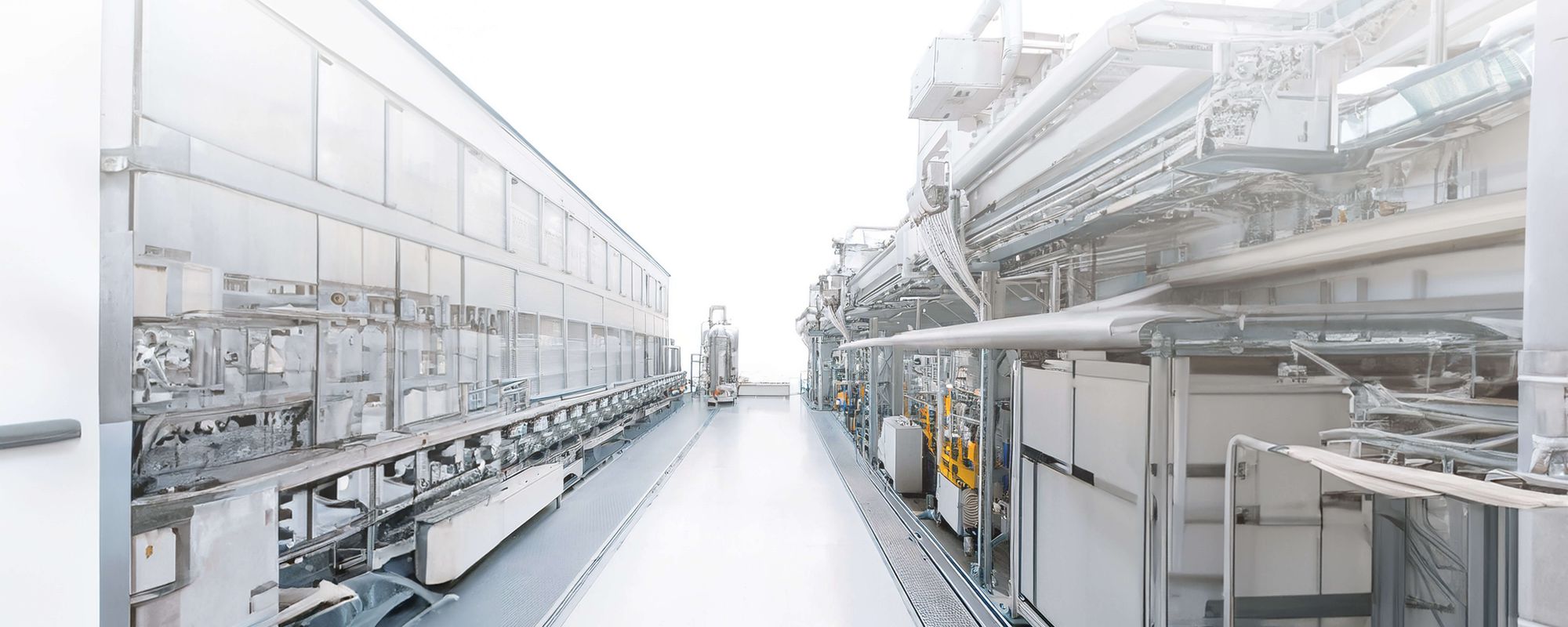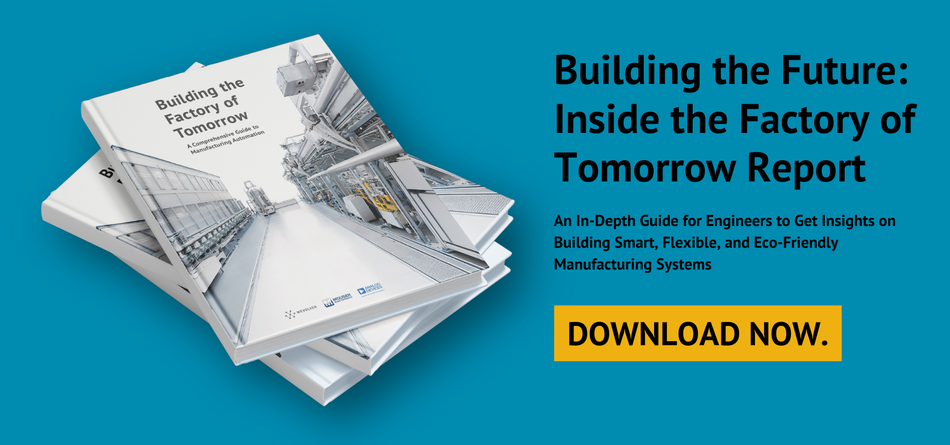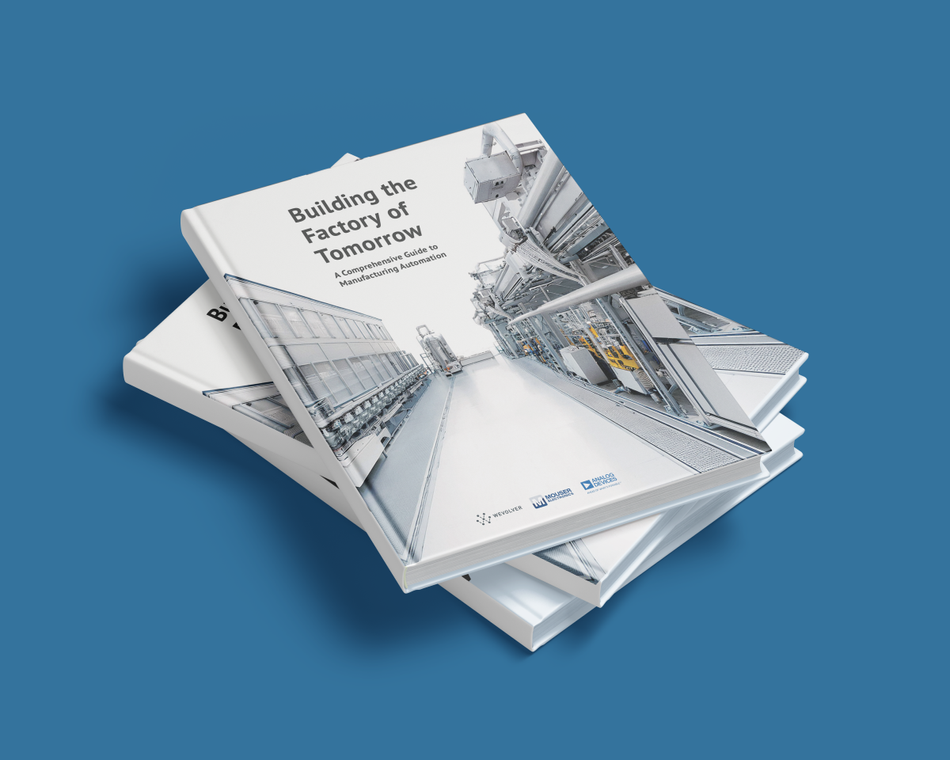The manufacturing industry is undergoing a profound transformation, driven by the convergence of advanced technologies, the complexities of globalization, and increasing demands for sustainable practices.
Our latest report, Building the Factory of Tomorrow, offers an in-depth analysis of the core forces shaping modern industrial production, from the accelerated pace of technological innovation to the integration of human-robot collaboration in next-generation factories.
Download this detailed report to explore:
- Cutting-edge advancements in AI, Quantum Computing, and Hyper Automation that are impacting manufacturing processes.
- The impact of globalized supply chains and virtual collaboration tools in enabling seamless cross-border operations.
- The shift toward sustainable production models, emphasizing circular value chains and carbon-neutral practices.
This report provides valuable technical insights for engineers, industry leaders, and decision-makers seeking to leverage the latest innovations and strategic trends to enhance operational efficiency and remain competitive in a rapidly changing landscape.
Get your free copy now and start building the factory of the future!
Report Foreward
In the heart of our rapidly evolving world, industrial factories and buildings stand as symbols of human progress. Yet, they also represent a significant environmental challenge. Accounting for approximately 50% of the world’s energy consumption1, these structures are at the centre of our global energy dilemma.
While industrialization has been a strong force for good, the current industrial model is failing our planet. With 80% of the energy supply provided by fossil fuels, of which 30% of emissions are caused in industrials2 the quest for a net-zero future is not just a goal—it’s an imperative. This journey necessitates a comprehensive reevaluation, reimagination, and reinvention of operational methods.
Automation technology, with its potential to transform the industrial landscape, has an important role to play in a more sustainable future. By digitizing, connecting, and interpreting data from what has widely become known as the Intelligent Edge, we can access insights that were previously beyond our reach. These insights have the power to unlock unprecedented levels of energy efficiency and productivity enhancements, forming the foundation upon which sustainable manufacturing capabilities can be built.
The Factory of Tomorrow will call for a digital transformation requiring manufacturers to re-engineer their systems for efficiency as they enable more data-driven decisions while also bridging the gap between their operation technology (OT) and their information technology (IT) networks. It is no longer about optimizing siloed products and processes in a linear way, it is about full system optimization. By merging digitalization and automation, operations transform to be data-focused, iterative, and circular. Data illuminates every phase, making it transparent and flexible, allowing for quick responses with complete system awareness. Therefore, even in unpredictable scenarios, one can make swift and knowledgeable decisions, enhancing processes across the entire system.
While presently only about 20% of shopfloor data is being utilized3, this needs to increase so that manufacturers can fully leverage the associated data insights. By collecting more data from the manufacturing processes, the insights obtained can contribute to improved efficiency, system uptime, and production yield. This necessitates an increasing number of sensors to collect this data within the manufacturing landscape. These sensors will demand flexible and dynamic connectivity, coupled with integrated intelligence to realize smart edge sensing capabilities. Making decisions at the edge reduces the volume of data that requires transferring back to the control room. This allows for faster insights, improved bandwidth utilization along with reducing unnecessary energy usage. This sensorization of the factory floor also enables factories of the future to adapt to a more flexible manufacturing environment to meet consumer personalization demands down to batch sizes of one.
At Analog Devices, Inc. (ADI), we identify three core pillars of the Digital Factory where our domain expertise, technology, and system-level solutions play a central role in unlocking the future of automation - Connect, Control, and Interpret. In the context of highly adaptable and dynamic digital factories, the connection of sensor data using industrial Ethernet and IO-Link® connectivity technology facilitates the integration of the OT and the IT layer. The control of flexible IO modules, coupled with precision motion control and advanced real-time aware robotics capabilities, empowers the digital factory to adjust to any demands while minimizing unnecessary energy consumption. Lastly, the Interpret aspect enables the future factory to enhance manufacturing yield through sophisticated asset health monitoring and actionable insights from sensors at the edge. Data will serve as a vital component within the smart factory, and in collaboration with ADI, we can assist in connecting, controlling, and interpreting this data to drive toward a better future.
This industrial report provides an overview of the key elements of the factories of tomorrow, highlighting the holistic approach required to the multifaceted endeavour of designing for automation. It starts by presenting a blueprint encompassing both technological and non-technological elements, followed by an exploration of key enabling technologies such as cloud/edge computing, networking, and AI. Both greenfield and brownfield deployments are considered as well as a detailed description of cyber-security-related considerations and challenges. It concludes with a summary of the main elements making up the future factory while likening the transition to the factories of the future as a marathon rather than a sprint, with the transformation taking place in a gradual, staged approach versus all at once.
As you delve into the pages that follow, I invite you to join us on this exciting journey towards a more sustainable, energy-efficient world. Let’s tap into the capabilities of automation technology and collectively shape the Factory of Tomorrow.
Fiona Treacy
Managing Director, Industrial Automation
Analog Devices, Inc.
Foreward references:
Use of energy explained - U.S. Energy Information Administration (EIA)
Fossil Fuels | EESI
Drives and Controls Magazine (drivesncontrols.com)





